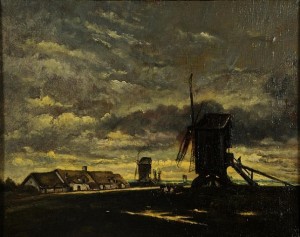 Williams, Raymond. 1973. The Country and the City. Oxford: Oxford University Press.
Williams, Raymond. 1973. The Country and the City. Oxford: Oxford University Press.
At the end of The Country and the City, Raymond Williams offers the reader an appendix on the origins of the keyword “country.” The word, he writes, “is derived from contra (against, opposite)” (307). Indeed, ideas of the “country” are congenitally related in contrasting relationship to the city. As reference to this contrast grew more frequent in sixteenth century England, the polarization of the ideas behind them became further entrenched. Like any dichotomy, it is misleading but nonetheless powerful.
Williams takes us on a literary and historical genealogy of this contrast between the country and the city. The contrast is not only a persistent literary motif during the early evolution of industrial capitalism, but also much more than that: Williams shows how the country/city contrast is a conceptual and emotive device through which “we become conscious of a central part of our experience and of the crises of our society” (289). Williams painstakingly traces the subtle and not so subtle shifts in ideas about the country and city and situates them within the changing historical realities and disruptions of their time in capitalist development.
In his Nobel Prize acceptance speech William Faulkner said that the only stories worth writing are those about “problems of the human heart in conflict with itself.” Indeed, all the episodic trends distilled by Williams from English literature can be boiled down to moments of a conflictive personal or societal cognitive dissonance in which his subjects—authors and characters—are trying to reconcile the event-driven contradictions of beliefs and values. For this reason, Williams repeatedly references his subjects’ “feelings” (e.g. pages 52, 53, 84, 150, 248, 256, and many more)—structures of feeling is only mentioned on page 12.
Williams explicitly notes that the country/city divide is one of gradation, and his analysis constantly retraces the reciprocal evolution of the two. This concept comes through forcefully in his discussion of Thomas Hardy: “The pressures to which Hardy’s characters are subjected are then pressures from within a system of living, itself now thoroughly part of a wider system. There is no simple case of internal ruralism and an external urbanism” (209). Williams illustrates the point with Hardy’s image of the threshing-machine in the countryside. The machine itself is described as a hulking “tyrant.” According to Williams, the thresher is not a stand-in for the alienation of urban industrialization against the “humanity” of rural life, as many have suggested. The symbolic contradiction of a machine in the country is powerful because Hardy (and Williams) is telling us that capitalist reorganization means that there is no neat separation between the rural and the urban.
